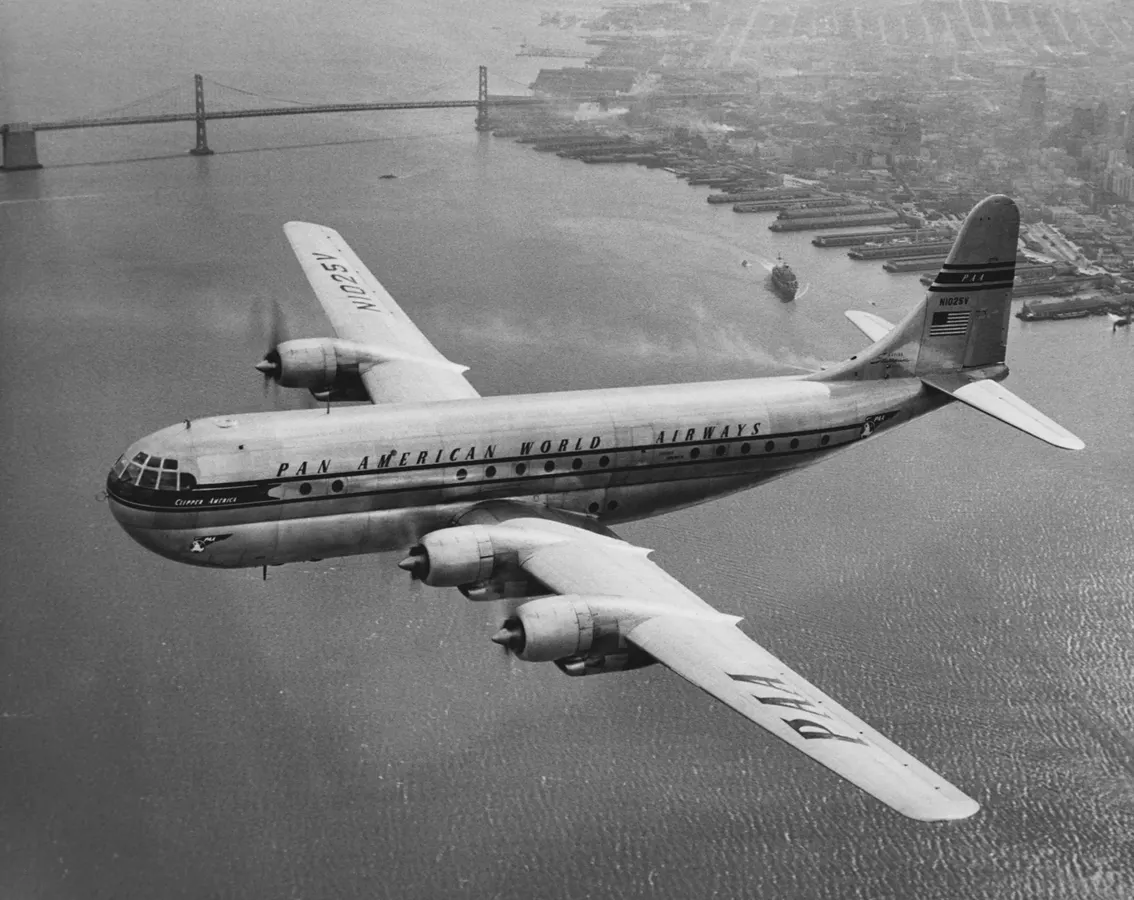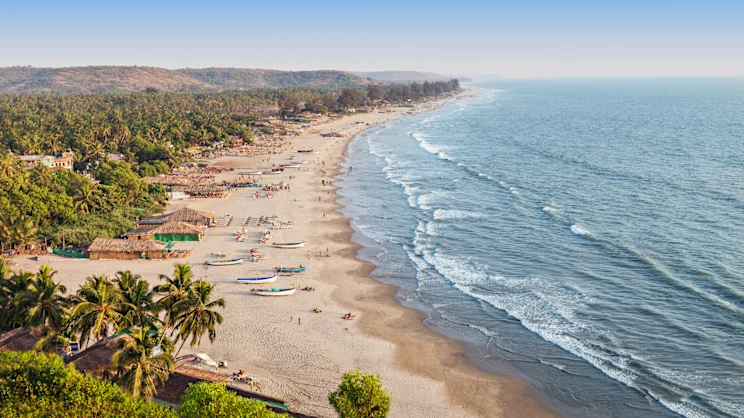Copyright forbes

A Boeing 377 Stratocruiser being used by Pan American Airways for passenger transport over San Francisco in the mid-20th century. | Location: over San Francisco, California, USA. (Photo by © Museum of Flight/CORBIS/Corbis via Getty Images) Corbis via Getty Images If you’ve flown this year, you can probably find something to complain about. But one thing passengers cannot complain about is how much safer flying is today than during the so-called golden age of air travel. Next year marks the 70th anniversary of a remarkable feat of flying comparable to the so-called Miracle on the Hudson, Chester Sullenberger’s successful 2009 ditching. But in 1956, the miracle at sea took place in the wide-open Pacific, with a giant, disabled propellor-driven aircraft. The heroic flight crew safely ditched a Boeing Model 377 Stratocruiser between Hawaii and California, after multiple engine failures. All passengers ultimately survived the harrowing flight. I recently thought about this as I flew from Maui to Los Angeles. The Pacific is big and empty, and only the two engines of an American Airlines A321neo were keeping us above it. But as I knew the plane met ETOPS, Extended-range Twin-engine Operations Performance Standards, that permit today’s twin-engine jets to make the 2500-mile over water journey, I went back to sleep. From the 1950s to the 1970’s, the golden age offered luxury, glamor, style and adventure, along with an unacceptably high accident rate. Aviation Week in 1956 “noted that, between 1948 and 1955 there were 127 mid-air collisions in the U.S. with 30 involving commercial airliners.” Even after World War II, commercial flying was relatively uncommon and considerably more dangerous than today. In 1938, there were about 1.5 million passengers. By 1950, this number had jumped to 19.5 million. Worldwide passenger numbers hit 70 million by 1956. MORE FOR YOU But 948 people died in aviation accidents in 1956. By contrast, in 2024, a worldwide passenger record of five billion was set, with a total of 318 fatalities. Farnborough, UK - July 20, 2014: Breitling Lockheed L-1049F Super Constellation “Star of Switzerland” HB-RSC taxiing at Farnborough Airport. And 1956 was not the deadliest year. According to data from the Aviation Safety Network, 1972 was the worst, with 2,373 people losing their lives. But 1956 proved a pivotal year for aviation safety, after two incidents, one tragic, the other almost miraculous. On June 30, 1956, a notorious crash took place over the Grand Canyon. A mid-air collision between TWA and United Airlines aircraft, a Lockheed Super Constellation and Douglas DC-7, killed 128 people. A combined Protestant, Roman Catholic, Jewish and Mormon religious service was held for the 70 passengers of the TWA Constellation, before their comingled remains were buried in a mass grave in Flagstaff, AZ. The crash changed the U.S. aviation system. The accident was deemed the fault of neither pilot, but of the air traffic control system itself.The pilots were flying under Visual Flight Rules, rather under the air traffic control system, which relied on visual cues by pilots and guesswork by controllers. A week after the accident, a Congressional hearing was held and an investigation began into the antiquated air traffic control (ATC) system. As a result, legislation was passed in 1957 to form the Federal Aviation Administration (FAA) and the National Transportation Safety Board (NTSB). The FAA updated the ATC system, putting both civil and military air navigation under one control, adding radar technology and better managing U.S. airspace. The changes came in time to make air travel safer for the first generation of jet airliners. Another accident in October 1956 showed the importance of the human factor in aviation safety. (Original Caption) Overnight intercontinental service will be a routine accomplishment of the Boeing Stratocruiser. A total of 28 berths, upper and lower, line the main deck of the aircraft, while room exists for an additional five passengers in a smaller upper compartment and 14 in the lower deck lounge. The berths are exceptionally spacious, have abundant headroom, and allow ample width for two persons. Bettmann Archive On October 16, 1956, Pan American World Airways’ Flight 6 was flying the last leg of an around-the-world passenger flight, from Honolulu to San Francisco. The aircraft was a r, “Sovereign of the Skies.” The Stratocruiser was a large aircraft, a direct descendant of the famed B-29 bomber. The Stratocruiser added a bulbous double-deck fuselage, one of only a few double-deck passenger aircraft (such as the Airbus A380) ever built. The Stratocruiser, which had a pressurized cabin, was luxurious and comfortable for passengers, especially those in First Class who had sleeping berths. The Stratocruiser was larger than the competitive Douglas DC-6 and Lockheed Constellation and cost more to buy and operate. Aircraft reliability was poor due to issues with the four 28-cylinder Pratt & Whitney R-4360 engines and structural and control problems with their propellers. The propellors, the subject of numerous Airworthiness Directives, were prone to catastrophic failure, as well as pitch control issues leading to overspeed incidents. Because of their high cost, only 55 Stratocruisers were built, with Boeing reporting a loss of $7 million. The planes suffered numerous in-flight emergencies. Of the 55 built, 13 were totally destroyed in accidents, many caused by the propeller overspeed problem. Nonetheless, the aircraft was popular, with a lounge, a galley, and comfortable seating. With its 4200 mile range, the Stratocruiser was used on prestige long-range routes, such as from the mainland to pre-statehood Hawaii. When Sovereign of the Skies took off from Hawaii at 8:24PM on October 15, 1956, it had a crew of 7 and 24 passengers. The flight crew of four was led by Captain Richard N. Ogg, a pilot with 13,000 flight hours. There were three female flight attendants, led by Purser Patrician Purser Patricia Reynolds. Big colorful “Aloha, Welcome to Hawaii” sign greets passengers at the arrival area of Honolulu International Airport in Hawaii. Flight time was estimated at 8 hours, 54 minutes, but taking no chances, Captain Ogg had the plane fueled for 12 hours of flight. Four and a half hours into its flight, Flight 6b had reached the half-way point. The int of No Return is when it will take an equal amount of time to fly back to the departure point as to go forward to the destination. At 1:19 a.m. (HST), First Officer Haaker reduced engine power as he had reached cruising altitude of 21,000 feet. Unfortunately, the propeller for the Number 1 engine then suffered a prop governor failure and began overspeeding. Its very high engine rpm threatened to tear the propellor apart. Unable to feather the propeller, Captain Ogg tried to force the engine to shut down by cutting off its lubricating oil The engine seized but the propeller continued spinning. This caused significant drag, forcing the other three engines to run at max power to maintain attitude. By 2:45AM, the Number 4 engine began backfiring and had to be shut down. In the middle of the night, the plane started to descend toward the ocean. With only two engines running and the drag from the windmilling propellors, the plane could make just 140 knots,. The navigator estimated that whether they continued to San Francisco or returned to Hawaii, they would run out of fuel 250 miles from land. Fortunately, there knew that the U.S. Coast Guard kept a ship on station between Hawaii and California, to provide weather information, radio communications and emergency assistance. Passengers enjoy a relaxing smoke on a Transocean Air lines Boeing 377 Stratocruiser in the mid 1950's. Transocean Air lines flew between 1946 and 1962 and was a pioneer discount airline. (Photo by Michael Ochs Archive/Getty Images) Getty Images Captain Ogg contacted the ship, the 255-foot USCGC Pontchartrain. He notified Pontchartrain that he intended to ditch the airliner near the ship at first light, still several hours away. The Coast Guard told the Captain he would be ditching into five-foot swells with eight know winds from the northwest. After advising the aircraft of the best approach, the ship laid a trail of foam to mark the way. At 6:15 a.m., at approximately 90 knots, Captain Ogg put the Boeing 377 down into the Pacific. One of the big plane’s wings hit a wave on landing. The aircraft spun and the tail broke off. The plane began to settle. The passengers had been well-prepared by the cabin crew and injuries were minor. The passengers were quickly evacuated into the sea, where they were picked up by the crew of Pontchartrain. Captain Ogg and Purser Reynolds were the last to leave the aircraft. Within twenty minutes, Sovereign of the Skies sank. The crew members later received commendations for their service during the emergency. Today’s equipment and coordination between aircraft and the ATC is unquestionably better than in 1956, although a government shut down is not the ideal operating environment. But the skill and training of today’s crews, like that of Captain Ogg, is a vital part of what keeps today’s passengers safe. Airliner passing over tropic palm trees. Adobe RGB. Editorial StandardsReprints & Permissions



